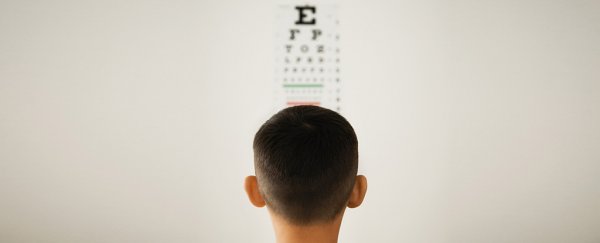It may seem obvious that children who can see better would do better in class. But just because it's obvious doesn't change the harsh truth: In the US alone, over 2 million kids don't have the glasses they need.
Now, the largest study of its kind to date provides further evidence of just how different things could be for many of those children.
In a landmark experiment involving over 2,000 students from more than 100 public schools in Baltimore, hundreds of children from grades 3 to 7 received free eye examinations and eyeglasses.
The 'Vision for Baltimore' study – conducted by researchers from Johns Hopkins University and nonprofit Vision To Learn – sought to answer a simple question, yet one somehow still unknown: Can free glasses provided by school-based vision programs (SBVPs) improve academic performance?
"A clear demonstration of the academic impact of SBVPs has not been made in the United States, to our knowledge," the team, including senior author and ophthalmologist Megan Collins, explains in a new paper.
To bridge that gap, a mobile eye clinic visited hundreds of schools as part of the Baltimore experiment, giving free eye examinations and glasses to hundreds of school children with impaired eyesight – while hundreds of children from other schools did not receive the intervention, thus serving as a control group.
When reading and mathematics test results from the two cohorts were compared a year later, the group who received the free glasses intervention saw significant improvements compared to the control group – particularly among girls, special education students, and students in the lowest-performing quartile at the outset of the experiment.
"We rigorously demonstrated that giving kids the glasses they need helps them succeed in school," Collins says.
"The glasses offered the biggest benefit to the very kids who needed it the most – the ones who were really struggling in school."
But while the experiment offers a strong suggestion that school-based vision programs can significantly enhance children's learning and academic performance, the results only went so far.
The secondary outcome of the trial – measuring the intervention's performance after two years – showed that the impact of the program had diminished at the two-year mark, with the academic improvements not being sustained.
As for why that is, the researchers suggest it's possible that students may have worn their eyeglasses less over time, or that the vision correction offered by the spectacles may have become ineffective over time (as the students' eyesight changed).
If so, the results are suggestive of something else that's kind of obvious: A single pair of glasses can make a dramatic improvement in how you see the world, but the effects are only as current as your prescription.
"Collectively, these findings underscore that for SBVPs to maximize impact, they must not only provide eyeglasses but also ensure mechanisms for monitoring wear, replacement, and connection to community eye care clinicians for long-term care," the researchers write in the study.
While there's more research and refinement to be done here – including running the program in other cities, and collecting more data on students' demographics and needs, and also investigating the intervention in younger children – the key takeaway is crystal clear.
"The study provides evidence that eyeglasses not only help children see more clearly but achieve more academically," the researchers conclude.
The findings are reported in JAMA Ophthalmology.
